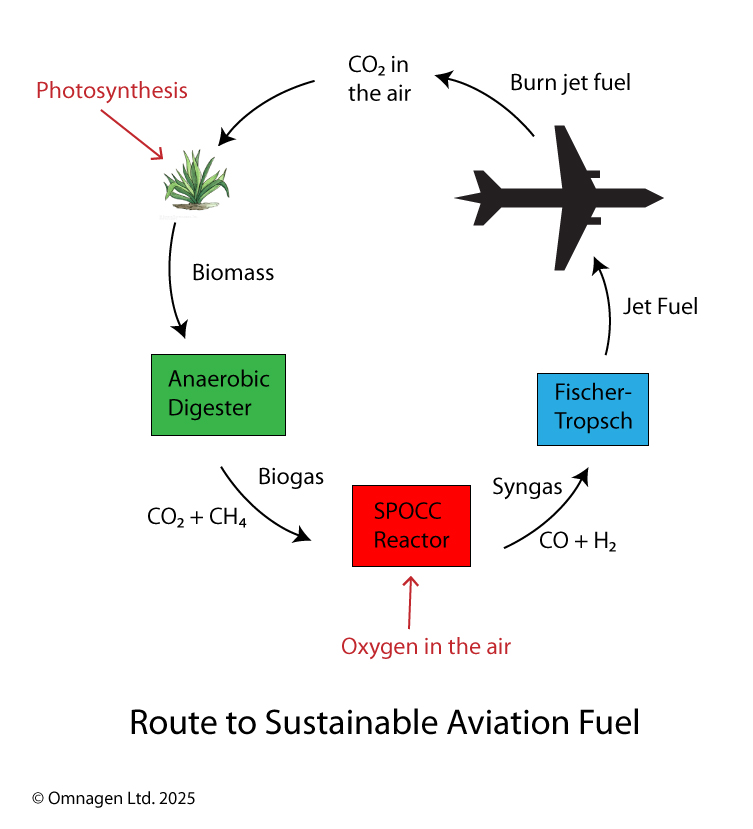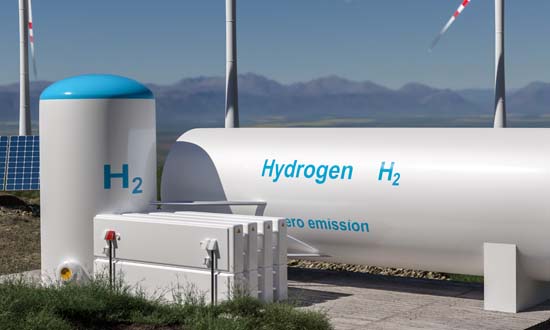
Biofuels - Sustainable Hydrocarbon Fuels
The SPOCC Reactor provides a route for converting biogas into biofuels, with no emissions.
Biogas, a mixture of methane and carbon dioxide, is formed by the action of bacteria on organic matter in the absence of oxygen (known as anaerobic conditions). This is the ideal input for the SPOCC Reactor which converts it to syngas, which existing processes can convert into biofuels.
If waste organic matter is used as the raw material, then this provides a sustainable route to the production of fuel for aviation, marine and commercial vehicles. The product has a negative carbon footprint. This would allow airports and airlines to continue using their existing infrastructure.
Despite progress in developing hydrogen-powered planes, hydrocarbon fuel will be needed to power most aircraft for some time to come. The image below outlines a route for the manufacture of sustainable aviation fuel.

Energy is needed to break the carbon-oxygen bond in carbon dioxide. Reactions in the above cycle break down CO2 at 2 places.
- In plants, photosynthesis uses energy from the sun to convert CO2 into sugars, which can be used by the plant to make the organic matter it needs.
- In the SPOCC Reactor where the partial oxidation of methane at elevated temperature powers the breakdown of CO2.
SPOCC Reactor
The Self-Powered CO2 Converter combines methane, CO2 and air at elevated temperature. Once at temperature, the reactions are self-sustaining.
Take a look to see how the technology works.
Sustainable Hydrogen
'Green' hydrogen, produced by water electrolysis is desirable, but also very energy intensive. Huge amounts of hydrogen are made by the 'grey' hydrogen route, which emits CO2. Read how the SPOCC Reactor could make this method sustainable.
Sources of Methane
Methane is everywhere because it is released by decaying organic matter. Unfortunately, it is also a very potent greenhouse gas. The presence of vast amounts of methane hydrate below ground makes its release potentially catastrophic. The SPOCC Reactor is a potential solution to this problem.


